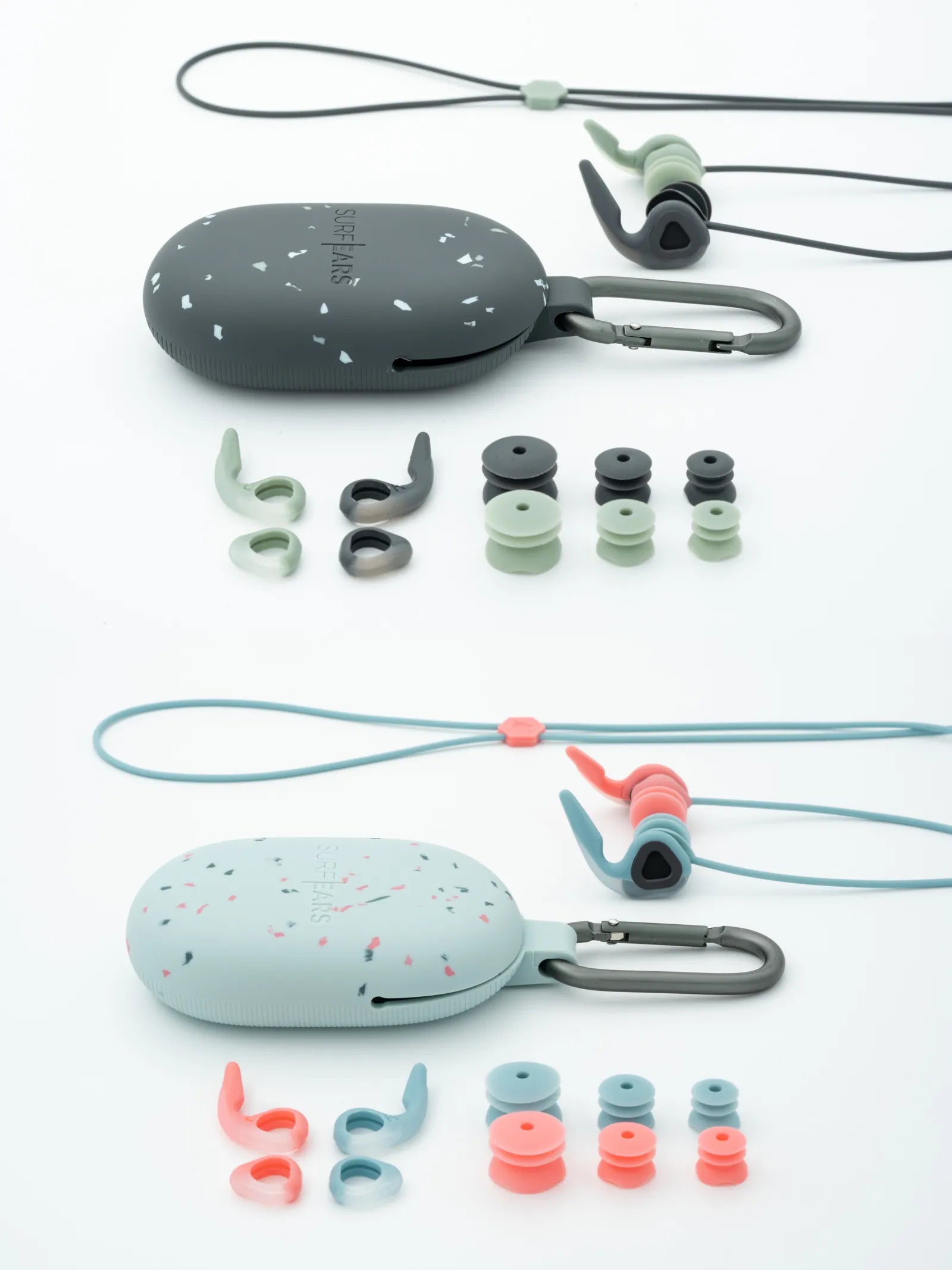Surfer's Ear (Exostosis) explained
Explaining Exostosis (also known as Surfer's Ear) can be a bit of an earful, so we decided to simplify some of the common questions among surfers and other water athletes:
Collapsible content

So what exactly is Surfer’s Ear?
Surfer’s Ear (Exostosis) is extra bone growth in the ear canal which is usually caused by the cooling effects of repeated exposure to cold water and wind. Surfer’s Ear is common not only among surfers but also those who take part in other water sports such as windsurfing, kayaking, open water swimming, diving, sailing, and kitesurfing. Farmers and others outside in windy cold conditions also suffer from SurfEars.
What are the symptoms of Exostosis?
During early stages of surfer’s ear there are typically no noticeable symptoms. As it develops further water getting stuck in the ear is a common first symptom, which will often lead to recurring ear infections. If it get bad it can also cause hearing loss or tinnitus (ringing sounds in the ear). Eventually surgery becomes necessary to remove the extra bone.
How can you prevent Surfer’s Ear?
You can significantly lessen your chance of developing Surfer’s Ear by wearing earplugs that fit well or by staying out of cold water.
How cold will the water need to be to develop Surfer’s Ear?
Anything below 20 °C or 68 °F will stimulate bone growth, but in combination with wind you can still be at risk in much higher temperatures.
How long does it take to develop severe Surfer’s Ear?
How quickly it can develop will vary from person to person. But important factors are how much time is spent in the cold elements and just how cold those conditions are.
What's the difference between Surfer’s Ear (Exostosis) and Swimmer’s Ear (Otitis Externa)?
‘Surfer’s Ear’ is the layered bone growth that occurs in the ear canal as a response to repeated exposure to cold water and cold wind and can require surgery. Whereas ‘Swimmer’s Ear’ is a bacterial infection of the skin inside the ear canal that causes swelling of the ear canal skin and is painful and is usually treated/cured with antibiotic ear drops. If you develop Surfer’s Ear you might be at higher risk to develop Swimmer’s Ear too, because when water get trapped in your ears it creates a damp environment where bacteria will thrive.
Why do I get ear infections every time I go to warmer waters from colder waters?
Warmer water tends to have more bacteria in it and people traveling from colder waters are more likely to already have developed a degree of Surfer’s Ear, which leads to the bacteria laden water becoming trapped in the ear and contributing to infection of the ear canal skin.
When is ear surgery required?
Surgery is recommended when the bone growths cause intolerable symptoms — repeated water trapping, infections, and trapping of debris in the ear canal.
How is surgery to remove bone growth performed?
The traditional method is to drill out the bone growth. In order for the surgeon to access the ear canal with the drill, the outer ear needs to be cut from behind and flapped over. Once the surgery is done the ear is stitched back, and the patient have to stay out of the water for several weeks. There is another technique where the bone instead are removed with a chisel, which is more gentle as it doesn’t require to cut the ear open and usually the recover time is shorter. The chiseling technique harder to perform for the surgeon, which is why there are not to many surgeons using this technique yet.
